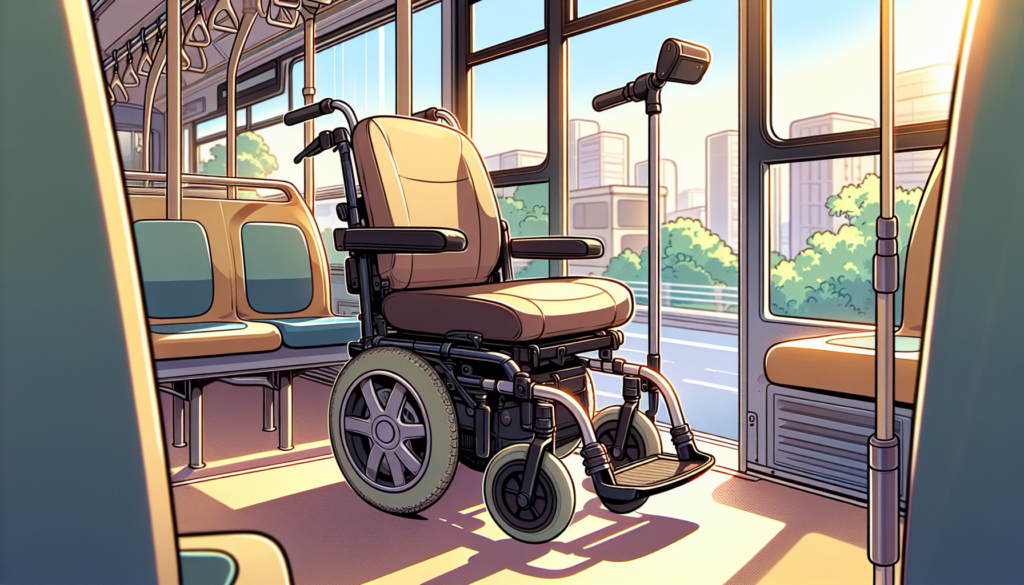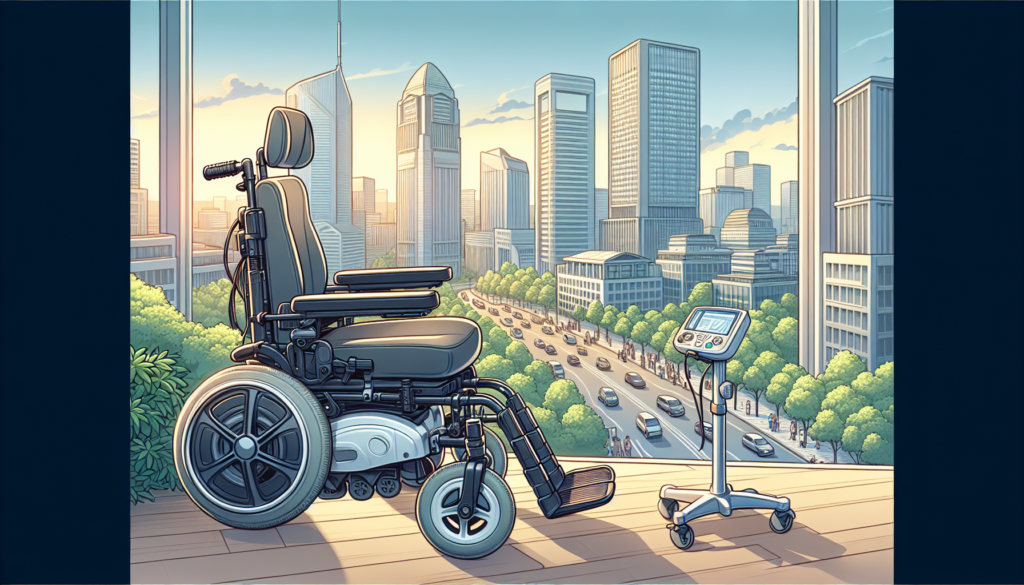
As electric wheelchairs become increasingly popular for enhancing mobility and independence, understanding the importance of their maintenance is crucial for ensuring optimal performance and longevity. Regular upkeep not only prolongs the life of the electric wheelchair but also enhances safety and reliability, allowing users to navigate their surroundings with confidence. This blog by EKO Life MY will explore key aspects of maintaining electric wheelchairs, emphasizing how proper care can lead to a smoother riding experience and greater peace of mind for users and their caregivers.
Understanding Electric Wheelchair Mechanics
Understanding the mechanics of electric wheelchairs is essential for ensuring optimal performance and longevity. Electric wheelchairs, such as the Edegree EW6 and the Stonbike TU-04, incorporate various components, including batteries, motors, and control systems, which work in tandem to offer users reliable mobility. The Edegree EW6 features a dual motor with a brushless design, providing a forward and reverse speed of up to 8 km/h, while the Stonbike TU-04 is powered by a dual motor that allows for a climbing ability of up to 25 degrees. Recognizing how these components function together emphasizes the importance of regular maintenance to keep them in peak working condition, preventing potential breakdowns and enhancing the overall user experience.
Maintaining the intricate mechanics of electric wheelchairs not only assures safety but also enhances operational efficiency. Routine checks on battery health, such as the lithium battery of the Edegree EW6 that requires 6 to 8 hours of charging for a range of 10-15 km, can prevent future complications. Additionally, components like gears and motors should be properly lubricated and adjusted to maximize performance. Understanding this vital aspect of electric wheelchairs helps users stay informed about their equipment and allows them to appreciate the significance of proactive maintenance, ensuring that their mobility aids remain functional and safe for years to come.
Importance of Regular Battery Checks
Moreover, understanding the specific requirements of different battery types is essential. For example, the Edegree EW1’s lead-acid battery may require a different maintenance approach compared to the lithium battery used in the Edegree EW6. Regularly monitoring the charge levels, cleaning the battery terminals, and ensuring the connections are secure can dramatically affect performance. Furthermore, timely charging, respecting charging time parameters—like the EW6’s 6-8 hours and the Stonbike TU-04’s 3-5 hours—also plays a pivotal role in sustaining the battery’s health. By prioritizing regular battery checks and following manufacturer guidelines, users can enhance their experience with their electric wheelchair and enjoy uninterrupted mobility.
Checking and Maintaining Motor Functionality
Another critical factor to consider is the effect of weight and load on motor functionality. Electric wheelchairs have specified maximum load limits, like the 100kg for both Edegree models and the 150kg for the Stonbike TU-04. Exceeding these limits can place excessive strain on the motors, leading to premature wear and potential malfunctions. Additionally, staying within the recommended weight thresholds ensures the wheelchair maintains its intended performance characteristics, including speed and climbing ability. This means that a thorough understanding of the wheelchair’s specifications, regular maintenance checks, and appropriate usage can significantly enhance the overall experience and safety of electric wheelchair users.
The Role of Tires and Wheels in Safety
The tires and wheels of electric wheelchairs play a crucial role in ensuring the safety and overall performance of the device. Properly maintained tires can significantly affect the wheelchair’s grip on various surfaces, which is essential for preventing slips and falls. For instance, the Edegree EW6, which has a maximum forward speed of 8km/h, requires reliable wheel traction for smooth acceleration and navigation. If the tires are worn or improperly inflated, it could compromise the wheelchair’s ability to maneuver effectively, especially when dealing with inclines or uneven surfaces. Thus, regularly checking the condition of the tires and ensuring they’re suitable for the terrain is vital for safe operation.
Moreover, the wheel alignment and integrity of the wheel structures are paramount to avoiding accidents. Damaged or misaligned wheels can cause inefficiencies while driving and may lead to accidents. For example, the Stonbike TU-04 supports a steep climbing ability of up to 25°; any issues with the wheels could severely limit its performance on such inclines. Therefore, a routine inspection of the electric wheelchair’s tires and wheels not only extends the overall lifespan of the device but also ensures that users can navigate their surroundings with confidence and safety.
Daily Maintenance Tips for Electric Wheelchairs

Daily maintenance is essential for keeping electric wheelchairs in optimal condition, ensuring they provide the mobility assistance that users rely on. For instance, regularly checking the battery charge and ensuring it is adequately charged can significantly impact the range of electric wheelchairs like the Edegree EW6 and EW1. A fully charged lithium battery in the EW6 allows for a range of 10-15 km, while the lead-acid battery in the EW1 allows for around 20 km.
Neglecting battery maintenance can lead to reduced performance and range, making frequent checks and a consistent charging routine crucial to extend the life of the wheelchair’s battery. Inspecting the tires and ensuring they are properly inflated also contributes to overall safety and efficiency, as low tire pressure can affect mobility and comfort during use.
Another aspect of daily maintenance involves checking the wheelchair’s overall functionality, such as ensuring the brakes work effectively and that all gears transition smoothly. For example, both the Edegree and Stonbike models feature a 5-speed mode which demands regular functionality checks to ensure user safety and comfort. An extra note is to keep the wheelchair clean, avoiding the accumulation of dirt and moisture that could damage electronic components. Prevention through consistent daily checks not only promotes longevity but offers peace of mind for users and caregivers, making mobility truly strong and reliable in everyday life.
Signs That Your Electric Wheelchair Needs Repair
Electric wheelchairs are essential for many individuals, providing mobility and independence. However, like any mechanical device, they require regular maintenance to ensure optimal performance. One of the clear signs that your electric wheelchair needs repair is decreased battery life. If you’re finding that your wheelchair isn’t traveling as far on a single charge as it used to, it may indicate that the battery is aging or has sustained damage. Other signs include unusual sounds from the motor or a sluggish response when accelerating. These could be indicative of underlying issues that should not be ignored.
Additionally, if you notice any difficulty when changing speeds or if the wheelchair does not maintain a stable speed, this can be a major warning sign. It might suggest that there are problems with the electric system or motor. Keeping an eye on these indicators can prevent more significant issues down the line and ensure that your electric wheelchair remains a reliable mode of transport for you. Regular checks and addressing problems promptly not only extends the lifespan of your wheelchair but also keeps you safe and confident while you navigate your world.
Expert vs. DIY Maintenance: What You Should Know
When it comes to maintaining an electric wheelchair, users often find themselves at a crossroads between expert maintenance and DIY solutions. Expert maintenance involves sending the electric wheelchair to qualified technicians who possess extensive knowledge and experience with these mobility devices. Professionals can quickly identify complex issues, calibrate systems, and ensure all components, such as batteries and motors, are functioning optimally. While this option may incur a higher cost, the peace of mind that comes from assurance and expert guidance outweighs the expense, particularly for those who rely heavily on their electric wheelchair for daily movement.
On the other hand, DIY maintenance can be appealing for users looking to save money and take charge of their electric wheelchair‘s upkeep. Performing simple checks, like inspecting tire pressure and cleaning the battery terminals, can extend the lifespan of the device. However, users must be cautious, as improper repairs or neglecting deeper mechanical or electrical issues could potentially lead to safety hazards. Therefore, knowing when to rely on your skills and when to seek professional help is crucial. A balanced approach to maintenance—combining expert insights with personal responsibility—can help ensure that electric wheelchairs function reliably and safely for years to come.
Costs and Benefits of Regular Maintenance
Regular maintenance of electric wheelchairs is crucial not only for their longevity but also for ensuring optimal performance and safety. While the upfront costs of a quality electric wheelchair like the Edegree EW6 or Edegree EW1 may seem significant, the expense of routine maintenance can lead to substantial long-term savings. For instance, a well-maintained wheelchair can prevent costly repairs and replacements, not to mention the potential medical expenses associated with accidents caused by mechanical failures. Investing time and resources into regular check-ups and servicing, such as battery inspections and motor assessments, can ensure mobility devices perform at their best, which is essential for users who depend on their wheelchairs for daily activities.
Furthermore, the benefits of maintenance extend beyond just financial aspects. For individuals relying on their electric wheelchairs – such as the Stonbike TU-04 – consistent maintenance can significantly enhance reliability and comfort. A well-maintained wheelchair ensures smooth operation, greater climbing ability, and improved battery performance, leading to a more enjoyable user experience. Charging time and range can also be optimized, ensuring that users can confidently navigate their environment without the fear of running low on battery. Thus, regular maintenance is not merely a cost but a vital investment in the safety, convenience, and longevity of electric wheelchairs.
Ensuring Longevity and Reliability: The Key Takeaway

In conclusion, regular maintenance of electric wheelchairs is not just about convenience; it’s essential for ensuring safety and longevity. An electric wheelchair is a significant investment, and taking the time to inspect and service your device can prevent malfunctions and costly repairs down the line. Whether you own the Edegree EW6 with its dual motors, the lead-acid Edegree EW1, or the Stonbike TU-04, keeping an eye on battery health, tire condition, and overall mechanical aspects can provide peace of mind and enhance your mobility experience.
Moreover, consistent care can greatly influence the overall performance and range of your electric wheelchair, allowing for optimal usage. By prioritizing maintenance, you not only improve the functionality but also enhance the safety and reliability of your mobility aid. Remember, a well-maintained electric wheelchair ensures that your independence remains intact, allowing you to navigate the world with confidence and comfort.

I couldn’t find any info about the summary, is there something missing?
Hi Li Ming Wong, sorry to hear that you were unable to find the summary. It’s possible that we accidentally left it out or the link might have expired. Can you please reach out to us at [email protected] or call us at +60 3-7890 3042? We’d be happy to provide you with the detailed information you’re looking for.
Love to read but can’t start because this blog summary doesn’t spark anything.
Thank you for taking the time to read our blog, Jia Xin Wong. We’re sorry to hear that our summary didn’t quite spark your interest, but we’re always open to feedback! If you’d like to discuss further, please feel free to reach out to us at [email protected] or call us at +60 3-7890 3042. Perhaps we can discuss ways to make our content more engaging and relevant to your bicycle, ebike, and escooter interests.
A good blog summary should entice me to read more, but this one falls short.
We appreciate your honest feedback, Aileen. We understand that a good blog summary should encourage readers to learn more. Our team will take your comment into consideration to improve our future blog summaries. If you have any further suggestions or would like to discuss this topic further, please don’t hesitate to contact us at [email protected] or +60 3-7890 3042.